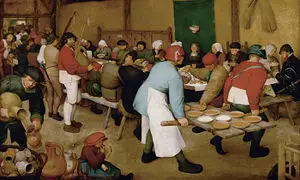Difference between revisions of "History of Social Inequality Top Ten Book List"
(→Top Ten List) |
(→Top Ten List) |
||
| Line 13: | Line 13: | ||
4. Kerbo, H.R. (2012) <i>Social stratification and inequality: class conflict in historical, comparative, and global perspective</i>. 8th ed. New York, NY, McGraw-Hill. Although this book does not look at deep history in any detail, the book does provide a useful global perspective and historical assessment of more recent periods to demonstrate how social stratification is developed and justified in different societies. Social stratification is often reinforced by religious or deep historical reasons in many parts of the world, but in the United States this is different, but inequality is pronounced based on racial and social access and opportunities for wealth. | 4. Kerbo, H.R. (2012) <i>Social stratification and inequality: class conflict in historical, comparative, and global perspective</i>. 8th ed. New York, NY, McGraw-Hill. Although this book does not look at deep history in any detail, the book does provide a useful global perspective and historical assessment of more recent periods to demonstrate how social stratification is developed and justified in different societies. Social stratification is often reinforced by religious or deep historical reasons in many parts of the world, but in the United States this is different, but inequality is pronounced based on racial and social access and opportunities for wealth. | ||
| − | 5. | + | 5. Milanović, B. (2012) <i>The haves and the have-nots: a brief and idiosyncratic history of global inequality. </i> New York, Basic Books, a member of the Perseus Books Group. This is a book by a economist who looks at how social inequality has changed. While social class often has defined inequality, more recently those who are born in the right countries (e.g., such as Western states) have a far higher likely potential for greater wealth. Inequality has, for the past thirty years, been increasing between countries. |
| + | |||
6. | 6. | ||
Revision as of 10:55, 18 October 2017
Social inequality is a major topic focused on by governments around the world today. While tackling this issue has remained controversial, the topic has a long history and societies in the past have developed in ways that either limited or expanded such inequality. What we find is that, historically, social inequality tends to increase as societies scale to larger population levels and the political structures are more expansive, as empires and large states form. This creates greater social dependencies, which link people more closely but also creates differences among them. Even societies that have consciously attempted to minimize inequality have rarely been successful in fully minimizing inequality in cases where populations are relatively large.
Top Ten List
1. Warde, B. (2017). Inequality in U.S. social policy: an historical analysis . New York, NY, Routledge, Taylor & Francis Group. This book provides a recent analysis of social inequality in the United States. From this analysis, it is clear the social inequality evident today has a long history in the United States. Racial, political, and economic access have not been even throughout the history of the United States, which has a historical precedent from the founding of the country.
2. Kaelble, H. (2011) The social history of Europe, 1945-2000: recovery and transformation after two World Wars . 1st ed. New York, Berghahn Books. Europe's experience in World War II led to major political and social reforms. Some of this did lead to reduction of poverty and social inequality, but new tensions emerged, including an influx of foreigners and reemergence of Neo-liberal philosophies that challenged planners. This book looks at how social inequality and social change developed in the key periods after World War II in Europe.
3. Mann, M. (1986) The sources of social power. Cambridge [Cambridgeshire] ; New York, Cambridge University Press. While this multi-volume work is slightly out of date, it is still a very useful volume that has provided a large-scale historical analysis that has looked at how social inequality developed from prehistoric societies to more recent ones. States and social stratification emerged to justify social ideals but also to reinforce power of leaders. Religious and other social authorities often emerged to enable emerging elites, often forming close bonds with rulers. Even in recent periods, many of these families and historical influences have shaped evident social inequality.
4. Kerbo, H.R. (2012) Social stratification and inequality: class conflict in historical, comparative, and global perspective. 8th ed. New York, NY, McGraw-Hill. Although this book does not look at deep history in any detail, the book does provide a useful global perspective and historical assessment of more recent periods to demonstrate how social stratification is developed and justified in different societies. Social stratification is often reinforced by religious or deep historical reasons in many parts of the world, but in the United States this is different, but inequality is pronounced based on racial and social access and opportunities for wealth.
5. Milanović, B. (2012) The haves and the have-nots: a brief and idiosyncratic history of global inequality. New York, Basic Books, a member of the Perseus Books Group. This is a book by a economist who looks at how social inequality has changed. While social class often has defined inequality, more recently those who are born in the right countries (e.g., such as Western states) have a far higher likely potential for greater wealth. Inequality has, for the past thirty years, been increasing between countries.
6.
7.
8.
9.
10.
